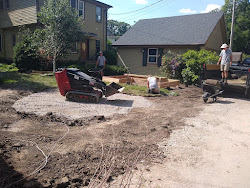Overwintering Monarch Butterfly totals from Mexico have just been released. Nine colonies of monarchs were found and covered an area of just over 2 acres (0.90 hectares on the graph below). Nearly all of the monarch butterflies in the world are overwintering in a space that is-
Less than two Football Fields!
Or ten average suburban yards!
These numbers are down nearly 60% from the previous winter, and the second lowest number ever counted – the lowest was during the 2013–2014 season.
The graph below is similar to the one we have shared before and shows the general overall decline, but this year's numbers were a shock to those who follow monarch butterfly news.
"To recover, monarchs will need an abundance of milkweeds and nectar sources. We need to get more milkweed and nectar plants in the ground, and we all need to contribute to this effort." says Kristen Baum, Director of Monarch Watch.
What can you do to help?
1. Plant a pollinator-friendly garden using native flowers (for nectar), and especially milkweed, the only source of food for monarch larvae
We can Help You, Help Them! Contact Us!
2. Provide water sources and basking areas
 3. Avoid using insecticides and other pesticides, and fertilize with natural compost
3. Avoid using insecticides and other pesticides, and fertilize with natural compost
4. Support pollinator conservation actions in your hometown, like Plant.Grow.Fly, and get kids involved!
5. Talk to your friends, family and neighbors about pollinators and how they can help out, too.
6. Like and Share this article, and others like it, on social media.
If you would like some milkweed seeds you can stop by the office and we will have some packets of common, butterfly and swamp milkweed to share while supplies last. These will need planted ASAP
































